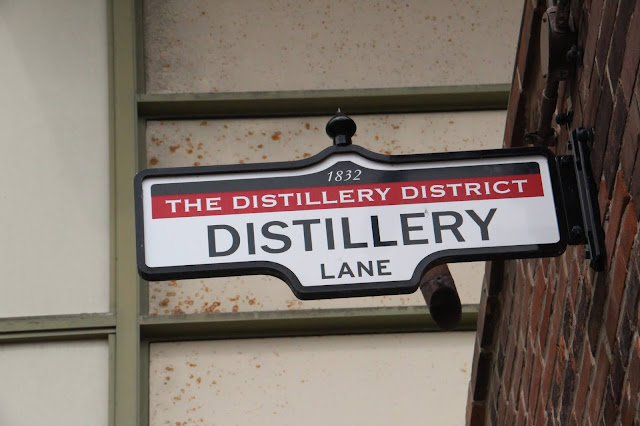Tom the backroads traveller hosts this weekly meme.
Timeless Thursdays is hosted by Stevenson Que
Click here for a history of Toronto lane naming and a list of other lanes. That post is a work in progress, and gets updated frequently.
We often visit the Distillery District, but that hasn't been possible in the last year due to the pandemic.
You can click on "Distillery District" in the tags/labels below this post for many more photos of the festivals they put on throughout the year. Even without a special event it is a fun place to visit.
With more than 40 boutiques and one-of-a-kind shops, The Distillery District is a well-known tourist destination.These photos were taken on various outings.
I featured the flatiron building last week and mentioned William Gooderham.
This is where Gooderham originally made his money.
The story of the Distillery District starts in 1832 with the idea for a grist mill on the east end of York (Toronto) harbour. James Worts had been a miller in Suffolk, England before moving to York. He built a 70-foot tall windmill that was a prominent feature on the York skyline and started a milling business with his brother-in-law William Gooderham. Together they started a business that led to the largest distilling operation in Canada. However, disaster struck in 1834 when James Worts lost his wife in childbirth. Distraught, he jumped in the well at the mill and drowned himself just two weeks later. Gooderham adopted his children and raised them along with his own thirteen. Among the adopted was James Gooderham Worts who would become his partner in the business.
But we are here to look at the lanes.
Case Goods Lane houses the Case Goods Warehouse, which is the youngest of the existing buildings (erected in 1927). Its age shows as it looks different than the earlier structures. It came when Harry Hatch, a Bridlewood horsebreeder and industrialist, bought the distillery in the 1920s and merged it with Hiram-Walker.












...they have created a wonderful destination. All of the brick building are beautiful. Thanks Jackie for sharing.
ReplyDeleteI really must visit there sometime. I've only seen it at a distance coming into the city.
ReplyDeleteInteresting post. That's a tragic story.
ReplyDeleteYou do find interesting signs!
ReplyDeleteThanks for sharing at http://image-in-ing.blogspot.com/2021/04/catbird.html
Everything has a story behind it's history and it's fun finding out the information.
ReplyDelete